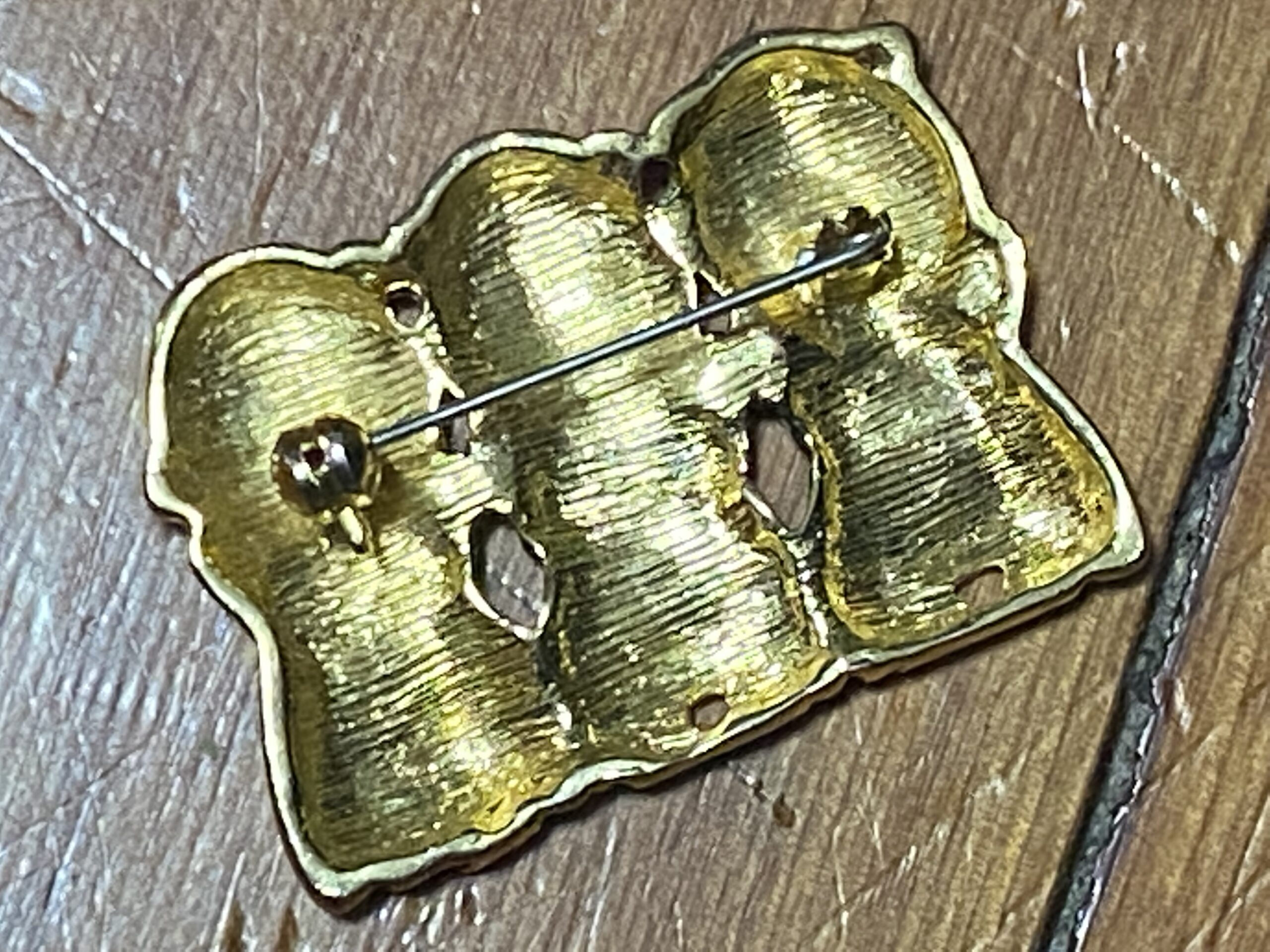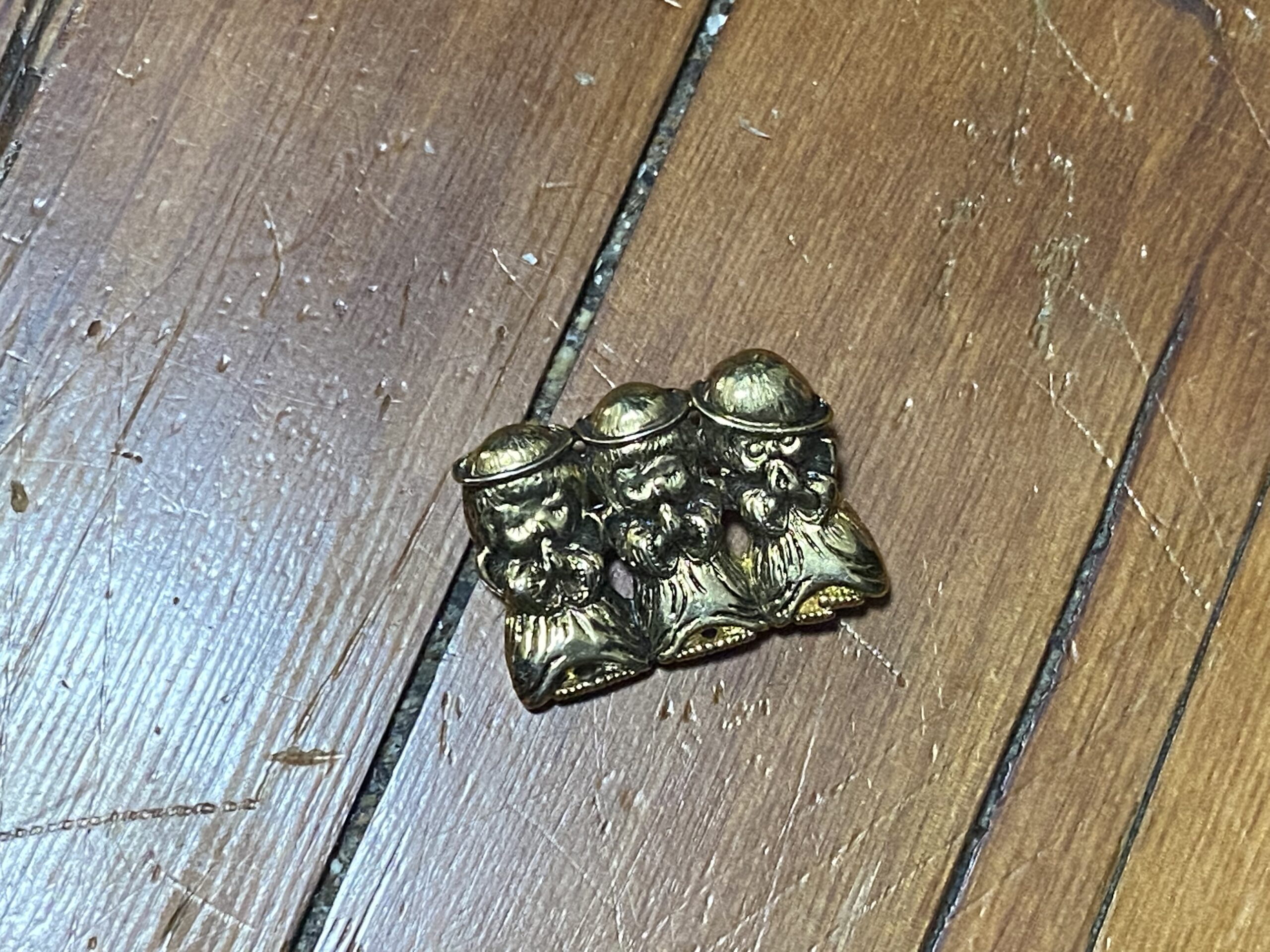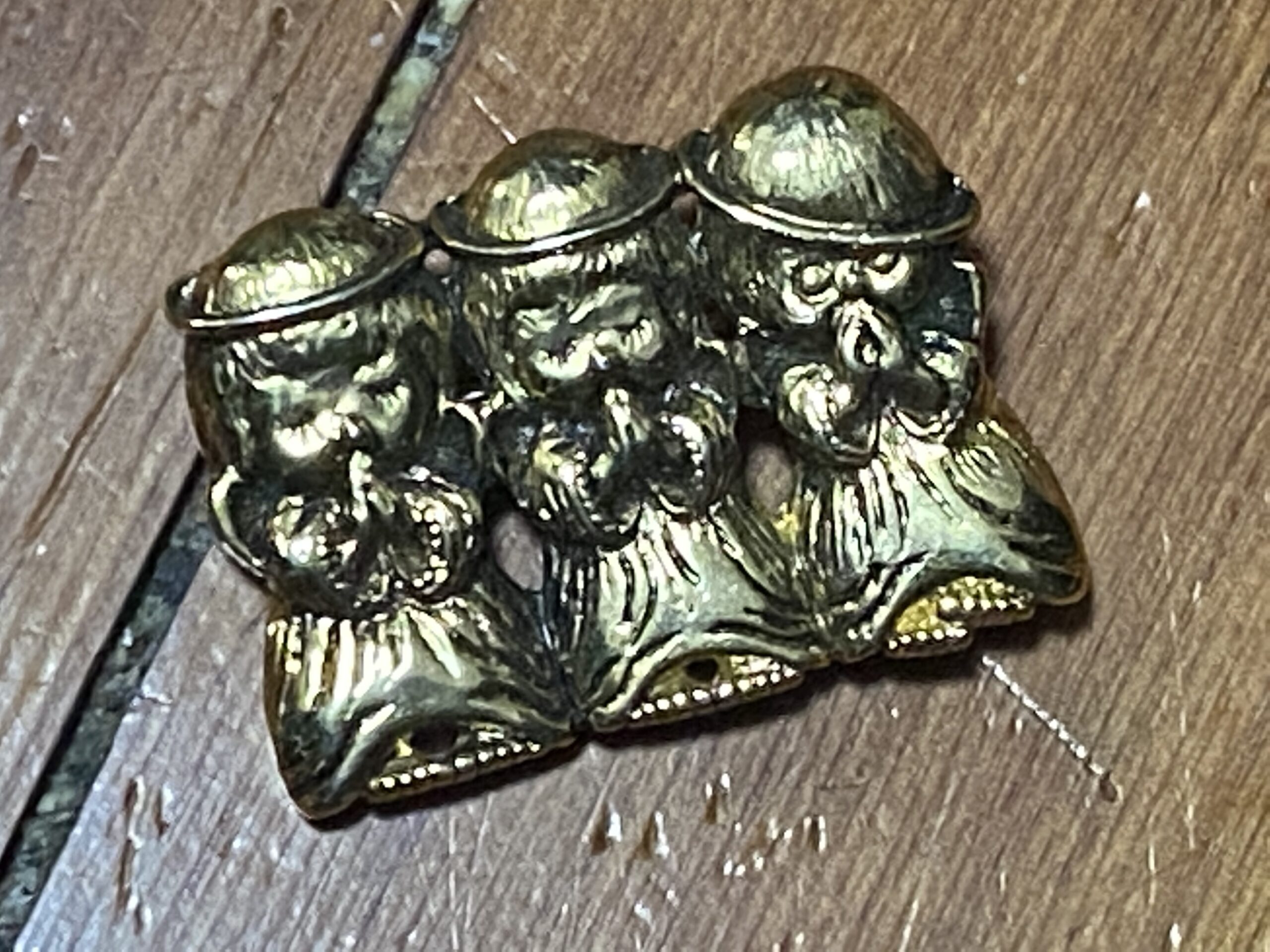Vintage “golden” brooch/ pin with three angels: 96,000 ppm Lead (& 1,300 ppm Cadmium, & 3,200 ppm Antimony, too)
 Published: July 5, 2022 — Tuesday
Published: July 5, 2022 — Tuesday
My youngest son bought this at a local antique store for 75 cents, hoping it was “real solid gold” (kids!)… no such luck. BUT it did have almost one percent gold in the plating]! Needless to say, he will not be allowed to add this to the collection of buttons, brooches, and pins on his “button jacket” (at nearly 10% Lead, this is going into my “museum of Lead” collection, instead). To see more costume jewelry I have tested, click here.
Reading on the front of the pin
- Lead (Pb): 96,000 +/- 1,400 ppm
- Cadmium (Cd): 1,399 +/- 131 ppm
- Tin (Sn): 90,200 +/- 800 ppm
- Mercury (Hg): non-detect
- Selenium (Se): 285 +/- 149 ppm
- Barium (Ba): non-detect
- Chromium (Cr): non-detect
- Antimony (Sb): 3,200 +/- 188 ppm
- Nickel (Ni): 393,500 +/- 2,100 ppm
- Copper (Cu): 404,800 +/- 2,000 ppm
- Iron (Fe): 502 +/- 227 ppm
- Gold (Au): 9,514 +/- 644 ppm
- Bismuth (Bi): 618 +/- 314 ppm
- No other metals were detected in consumer goods mode.
For those new to this website:
Tamara Rubin is a multiple-federal-award-winning independent advocate for childhood Lead poisoning prevention and consumer goods safety, and a documentary filmmaker. She is also a mother of Lead-poisoned children (two of her sons were acutely Lead-poisoned in 2005). Since 2009, Tamara has been using XRF technology (a scientific method used by the U.S. Consumer Product Safety Commission) to test consumer goods for toxicants (specifically heavy metals — including Lead, Cadmium, Mercury, Antimony, and Arsenic). All test results reported on this website are science-based, accurate, and replicable. Items are tested multiple times to confirm the test results for each component tested. Tamara’s work was featured in Consumer Reports Magazine in February of 2023 (March 2023 print edition).

Never Miss an Important Article Again!
Join our Email List








 Published: July 5, 2022 — Tuesday
Published: July 5, 2022 — Tuesday
